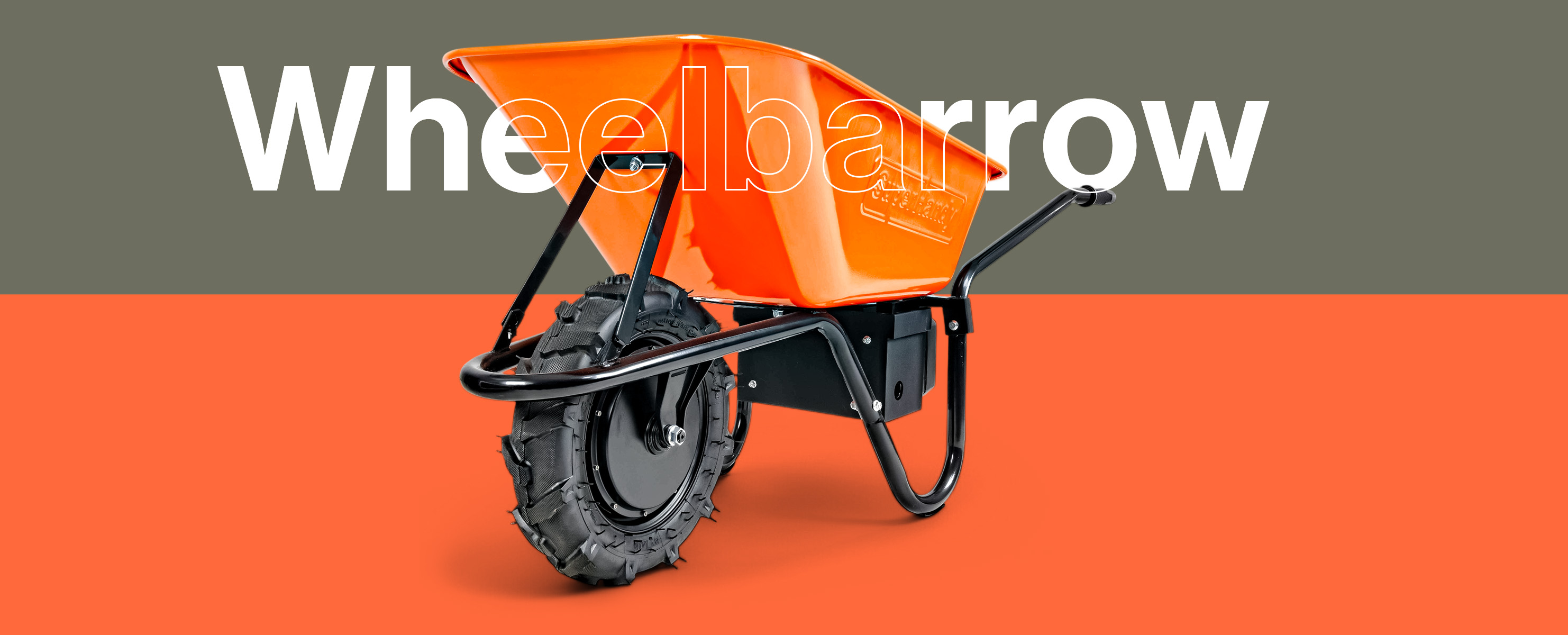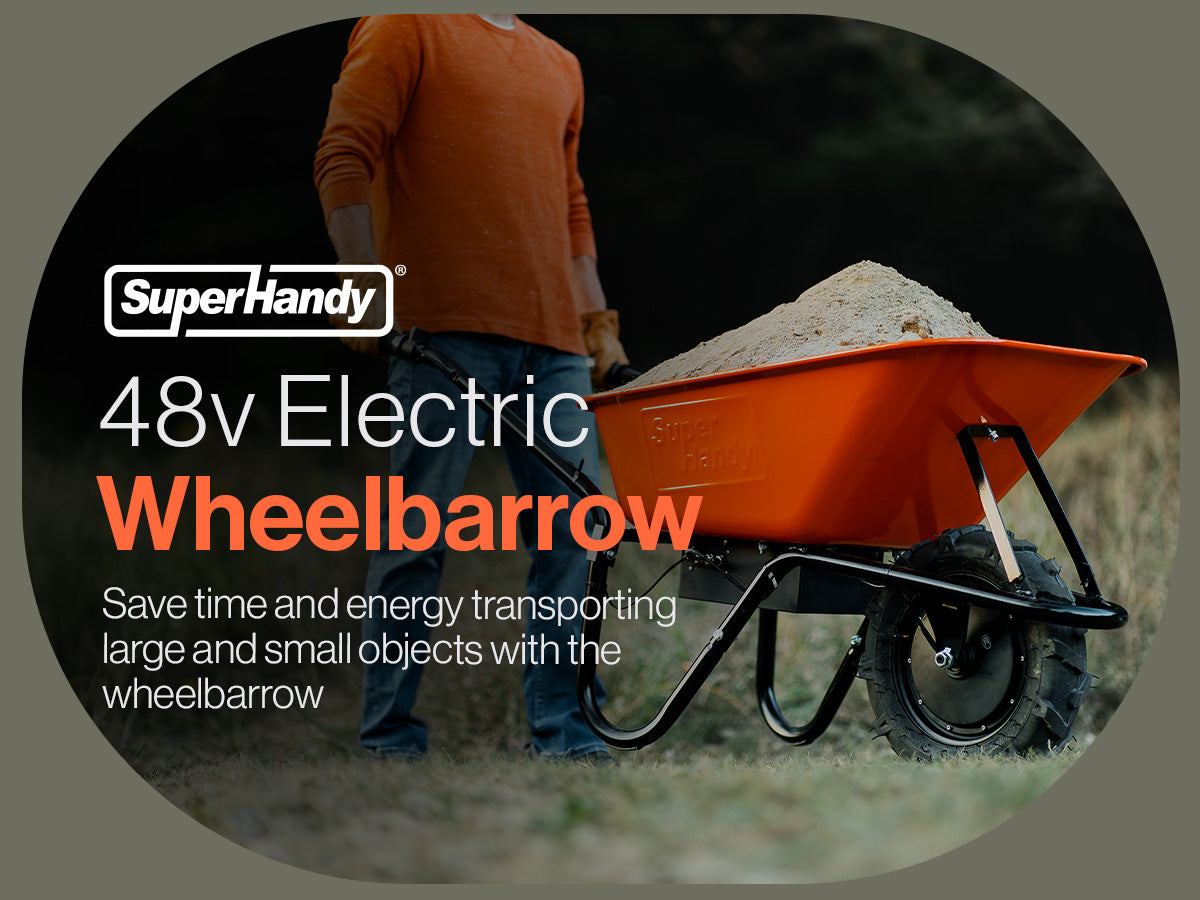You need a wheelbarrow with a reinforced frame and sturdy tray to handle demanding jobs. Construction and landscaping tasks account for 42% of wheelbarrow market demand, showing that users prefer tough designs. Standard wheelbarrows often fail during heavy-duty use:
-
They can topple over with heavy loads.
-
Loads may shift on inclines, causing loss of control.
-
Sudden movements risk back injuries.
Choose your wheelbarrow based on the tasks you face and the weight you plan to move.
Key Takeaways
-
Choose a wheelbarrow with a steel frame for maximum strength. Steel can handle heavy loads without bending.
-
Select a wheelbarrow with deep trays to carry more materials at once. This saves time and reduces the risk of spills.
-
Check the tyre type before use. Pneumatic tyres are best for rough terrain, while flat-free tyres prevent punctures.
Wheelbarrow Strength and Build
Frame Material
When picking a wheelbarrow for hard jobs, the frame is important. Steel frames are the strongest you can get. Steel lets you carry heavy things without it bending. If you clean and store steel wheelbarrows, they last for years. They do not break or crack when you use them for tough work. This means you can trust them to work well every time. But steel can get rusty if it stays wet or muddy for too long. You should look for rust and clean your wheelbarrow after you use it.
Plastic and fibreglass make the wheelbarrow lighter and easier to push. These materials do not rust, so you do not worry about them getting damaged by water. But plastic and fibreglass are not as strong as steel. If you need to move bricks, concrete, or soil, steel is the best choice.
-
Steel wheelbarrows are very strong and last a long time, but they are heavy and can rust.
-
Plastic and fibreglass wheelbarrows are light and do not rust, so they are easy to move, but they cannot carry as much as steel ones.
Tray Design
The tray shape changes how you load and empty things. Deep trays hold more, so you do not have to make as many trips. Wide trays help you keep the load steady and stop things from falling out. If you carry heavy things like mortar or concrete, strong steel bars connect the tray to the frame. This stops the tray from twisting or tipping over when you carry heavy loads.
You want a tray that does not break or rust. Steel trays are very strong and can take rough use. Poly trays are made from strong plastic and do not rust. They are lighter, so you can lift and tip the wheelbarrow more easily.
|
Material |
Corrosion Resistance |
Impact Resistance |
|---|---|---|
|
Plastic |
Yes |
Moderate |
|
Steel |
Moderate |
High |
-
Steel tray wheelbarrow: Very strong, good for mixing concrete or carrying rubble.
-
Poly tray wheelbarrow: Does not rust, light, good for garden waste.
Reinforced Structure
A reinforced structure gives the most strength. Heavy-duty wheelbarrows use thick steel tubes. These last longer than thin frames. Makers add extra support at weak spots to stop bending. Powder coating covers the frame and keeps rain and mud away, so the wheelbarrow stays strong.
Extra bars under the tray make it more stable. You will see under-tray bars made from powder-coated steel. Front support brackets and back braces keep the tray steady when you tip out heavy things. The sub chassis uses thick welded steel tubes for more strength.
|
Reinforcement Type |
Description |
|---|---|
|
Tubular Steel Construction |
Thicker steel tubes make it last longer. |
|
Reinforcement at Critical Stress Points |
Stops bending when carrying heavy things. |
|
Powder Coating |
Keeps away rust and bad weather. |
|
Front Support Bracket |
Lets you change tray position for more support. |
|
Rotational Back Brace |
Holds the tray edge when it is pushed down. |
|
XX-Undercarriage Brace |
Helps against hard hits. |
A strong frame and tray help you avoid problems. You are less likely to get punctures, wear, or damage from the weather. Handles with comfy grips help you control the wheelbarrow and feel less tired after moving heavy things.
Tip: Always check for rust and broken handles before you use your wheelbarrow. Clean it and store it properly to make it last longer.
Best Wheelbarrows for Heavy Loads

Tyre Type and Size
You should check the tyres first when picking a wheelbarrow for heavy loads. The right tyres help you move heavy things safely. Large pneumatic tyres make rough ground easier to cross. These tyres soak up bumps and help you push over stones or gravel. Flat-free tyres are good for rocky ground. They do not go flat, so you can trust them with big loads. Solid rubber tyres last longer than pneumatic ones. They carry weight well but are harder to push.
-
Pneumatic tyres: Good for rough ground and comfort.
-
Flat-free tyres: Best for rocky ground and do not go flat.
-
Solid rubber tyres: Strong and last long, but harder to push.
Tyre size is important too. Bigger tyres make moving heavy loads easier. Two wheels give more balance and stop tipping. One wheel lets you turn quickly in tight places. If your tyres go flat, the wheelbarrow is hard to push and less steady. This can cause injuries or damage, especially with heavy loads. Pneumatic wheels are best for rough ground. Solid foam-filled wheels are good for flat, smooth ground.
Tip: Always check your wheelbarrow tyres before you start work. Puncture-proof tyres save time and keep you safe.
Load Capacity
Capacity is very important when picking a wheelbarrow for heavy loads. You need a wheelbarrow that can carry what you want without breaking. Bigger wheelbarrows with deep pans let you move more at once. This saves time and effort. Deep trays help keep your load steady, so you do not spill things.
The best heavy duty metal wheelbarrow can hold 200kg or more. This means you can move lots of rubble, sand, or building stuff. Puncture-proof tyres and a strong frame help you carry heavy loads safely. Always check the maximum capacity if you need to move very heavy things. Overloading can break the tray or tyres and make it hard to control.
|
Wheelbarrow Type |
Tray Depth |
Capacity (kg) |
Tyre Type |
Puncture-Proof |
|---|---|---|---|---|
|
Heavy Duty Metal |
Deep |
200 |
Pneumatic |
Yes |
|
Poly Tray Garden |
Medium |
120 |
Pneumatic |
Yes |
|
Powered Electric |
Deep |
250+ |
Pneumatic |
Yes |
-
Pick a wheelbarrow with high capacity for building or landscaping.
-
Deep pans and strong trays help you carry more with less risk of spills.
-
Puncture-proof tyres keep your wheelbarrow moving, even with heavy loads.
Powered Options
Sometimes you need more help to move heavy loads, especially up hills. Powered wheelbarrows use a motor to help you move the load. You do not have to push as hard, so you stay safe and protect your back.
Powered wheelbarrows are best for steep hills and very heavy loads. You can move soil, bricks, or concrete up slopes without hurting yourself. These models often have pneumatic tyres and puncture-proof options. You do not have to worry about flats. You also avoid back injuries, which can happen when you lift or tip a manual wheelbarrow.
-
Powered wheelbarrows stop you from lifting heavy loads, which can hurt your back.
-
Lifting a manual wheelbarrow can cause strain or injury, especially if you overload it.
-
Some powered models let you move loads without lifting, so you are safer.
-
Good job design and ergonomics can stop many back injuries.
-
Adults with back pain spend more on medical bills than those without pain.
When you pick the best wheelbarrow for your job, always check the capacity, tyre type, and if you need a powered one. Pneumatic and puncture-proof tyres, deep trays, and strong frames give you the safety and strength you need for any job.
You need certain things in a heavy-duty wheelbarrow. First, steel construction makes it strong. Next, a big tray lets you carry more. Pneumatic tyres help keep the wheelbarrow steady.
|
Checklist Item |
Description |
|---|---|
|
Tub capacity |
Pick a size that is easy for you to use. |
|
Handles |
Choose handles that feel good and are strong. |
If you look after your wheelbarrow, it will last for years.
FAQ
What makes a wheelbarrow heavy-duty?
You get a heavy-duty wheelbarrow when you choose one with a steel frame, deep tray, and reinforced structure. These features help you move heavy loads safely.
How do you maintain your wheelbarrow for long life?
You should clean your wheelbarrow after each use. Store it in a dry place. Check for rust and tighten any loose bolts to keep it strong.
Can you use a wheelbarrow on steep slopes?
You can use a wheelbarrow on slopes if it has large pneumatic tyres and a strong frame. Powered models help you move loads up hills with less effort.

